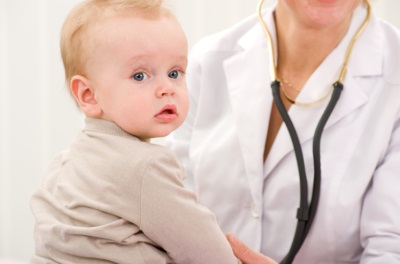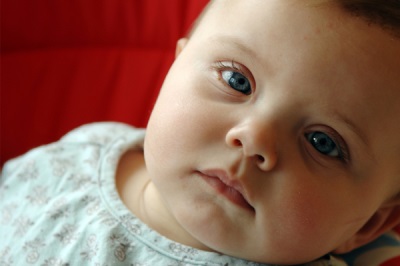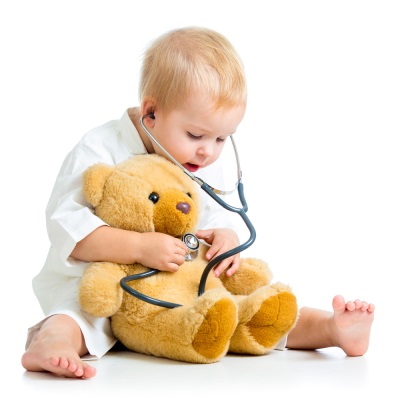Symptoms and treatment of dysbiosis in children
Dysbacteriosis is called an imbalance of the intestinal microflora, which is expressed by the deterioration of the child's digestion. Let's see why a child can develop dysbiosis, how it manifests itself, is diagnosed and treated.
The reasons
The appearance of dysbiosis is possible due to:
- Antibiotic therapy;
- Birth trauma;
- Acute or chronic diseases of the digestive system;
- Long-term use of drugs;
- Stay in environmentally unfavorable conditions;
- Stress and frequent colds, as well as passive smoking;
- Unbalanced nutrition, including the early introduction of complementary foods;
- Helminthiasis;
- Viral infections.
The high incidence of microflora imbalance in young children is due to the immaturity of the gastrointestinal tract of babies and a large number of risk factors, ranging from pregnancy complications to infectious bowel disease of the baby.
Symptoms
Dysbacteriosis in children is manifested:
- Regurgitation;
- Breath;
- Vomiting;
- Sleep disturbance and restless behavior in infancy;
- Low rate of weight gain in the first year of life;
- Abundant stool pasty or liquid form, with foam, green, whitish lumps, putrid or sourish odor;
- Bouts of pain a few hours after eating;
- Rumbling in the stomach and bloating;
- Polyhypovitaminosis;
- Persistent constipation in older children;
- Appearance of intestinal colic;
- Belching;
- Feeling of pain in the stomach after eating;
- Loss of appetite;
- The appearance of thrush, frequent infectious diseases;
- Skin rash.
Risk factors
In a child, the composition of microflora can most often be disrupted due to:
- Later attachment to the breast, as a result of which the child does not receive protective factors from colostrum, contributing to the growth of beneficial bacteria.
- Too early or very sharp transfer to feeding mixtures, when the beneficial microorganisms have not had time to colonize the intestines.
- Unbalanced nutrition of an older child, if he consumes little fiber, which is important for the vital activity of bacteria in the intestine.
Disease progression
In healthy children, the intestines contain bacteria, predominantly represented by lacto-and bifidobacteria, as well as with intestinal sticks. Such bacteria make up 97% of the microflora in the intestine. They perform many valuable functions for the body - they remove toxins, regulate immunity, synthesize vitamins, participate in metabolic processes, stimulate peristalsis, help absorb calcium, synthesize some amino acids.
Also, the intestinal microflora partially consists of conditionally pathogenic microbes, the number of which increases with an adverse effect on the body. In addition, there is always a risk of pathogens entering the intestine. In dysbacteriosis, the number of bifidobacteria and lactobacilli decreases, while the number of conditionally pathogenic and pathogenic bacteria increases.
In children, the prevalence of dysbacteriosis is primarily due to the fact that at birth their intestines are completely sterile. It is colonized by microflora during childbirth, during the first breastfeeding and feeding in the first months of life.That is why it is more preferable to feed with mother's milk, since such a diet helps to colonize the intestines of the infant with precisely those bacteria that should live there normally.
When exposed to any factor that causes dysbacteriosis, for example, the absence of breastfeeding or long-term treatment of the infant with antibiotics, the number of bifidobacteria and lactobacteria in the intestinal flora decreases. Pathogenic microorganisms become larger, which leads to disruption of the digestive tract.
Dysbacteriosis forms
Dysbacteriosis can be classified by the microflora that currently prevails in the child's digestive tract, for example, candidal or staphylococcal dysbacteriosis.
Depending on the distribution of pathology can be:
- localized;
- common (it is also called generalized).
A common form in addition to violations of the gastrointestinal tract may manifest as thrush, pneumonia, tonsillitis. The hidden form is manifested by a slightly reduced appetite, frequent infections and low weight compared with peers.
The course of the disease can be represented by phases of decompensation (the child’s condition is worsened) and subcompensation (symptoms are moderate), as well as compensation (there are no clinical manifestations). There is also a division of dysbiosis by severity.
Stages of the disease
- First stage is latent dysbiosis, which is also called compensated, because the digestive function is impaired little. The child periodically accumulates gases in the intestines, appetite worsens. Fecal masses may have uneven coloration. Often there are constipation, but they can alternate with the release of a liquefied stool. The child sometimes behaves restlessly and is easily excited.
- In the second stage the disease becomes subcompensated. Other symptoms join which make dysbacteriosis similar to other diseases of the digestive tract (enteritis, enterocolitis, colitis). The child may vomit, poor appetite, bloating, frequent regurgitation. The baby begins to show anxiety about 2 hours after eating. He may have disturbed sleep. The doctor may also note that weight gain is insufficient.
- Third stage considered heavy. The child’s condition worsens, he is lethargic, refuses to eat. Frequent manifestations of this stage are diarrhea, cramping abdominal pain, occasional fever, constipation. The child suffers from hypovitaminosis and anemia. There is a risk of dehydration and the development of sepsis.
The severity of dysbiosis
There are four degrees of severity of this pathology, depending on the results of the study and the identified microflora composition:
- At the first degree disturbances in the child's body are minor. Bifidobacteria are determined in an amount of at least 107-8. The predominant type of bacteria are anaerobes. Conditionally pathogenic flora is represented by up to two types of microorganisms, and their number does not exceed 102-4.
- Second degree disorders characterized by an increase in the number of aerobic bacteria. Their number is compared with anaerobic flora. The number of opportunistic bacteria rises to 106-7. Instead of the usual intestinal bacilli, lactose-negative and hemolyzing are determined.
- Signs of the third degree is the predominance of aerobic bacteria. A large number of conditionally pathogenic microflora is detected in the intestine, and lacto-and bifidobacteria are sharply reduced.
- About fourth degree they say when bifidobacteria are absent in the child's digestive tract, and E. coli and lactobacilli are significantly reduced. Conditionally pathogenic microorganisms with such a degree of the disease often exhibit resistance to antibiotic therapy.
Diagnostics
Dysbacteriosis can be identified on the basis of clinical manifestations after the appointment of additional studies - coprogramsbiochemical as well as bacteriological stool analysis.
Treatment
Therapy for dysbacteriosis, if the doctor after analyzes and evaluation of clinical manifestations made conclusions about its necessity, includes the elimination of pathological microflora and intoxication, restoration of digestion using enzymes, as well as treatment of lactase deficiency in case of its detection.
Further treatment will be directed to colonization of the gastrointestinal tract with normal microflora and stimulation of its growth.
First of all, pay attention to child's diet with dysbiosisas well as diet. Treatment antibiotics possible only after appointment by a doctor if there is evidence. The child may be prescribed bacteriophages and intestinal antiseptics. Give great importance to receive probiotics.
Have baby
For an infant, one of the important factors in the treatment of intestinal dysbiosis is breastfeeding. If it is impossible for certain reasons, the child should be fed with an adapted mixture enriched with protective factors.
Prevention of dysbiosis in children was reviewed by us in another article.
Consequences of the disease
Due to dysbacteriosis, the child's immunity decreases, so the baby becomes less protected from various viral and bacterial infections. Dysbacteriosis can also affect the absorption of nutrients in the intestines, which leads to insufficient intake of mineral compounds and vitamins into the child’s body.














